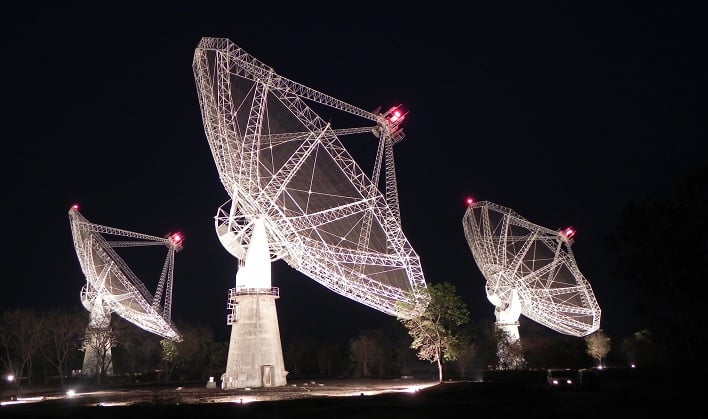Astronomers Detect A Record-Breaking Signal From A Distant Galaxy With Cosmic Secrets

Researchers from Montreal and India detected the signal from the distant galaxy known as SDSSJ0826 + 5630. The group stated that the observed atomic mass of the gas content of the galaxy is near twice the mass of the stars visible to us. The signal was emitted by the galaxy when it was a mere 4.9 billion years old, giving researchers a peek into the secrets of the early universe.
"A galaxy emits different kinds of radio signals. Until now, it's only been possible to capture this particular signal from a galaxy nearby, limiting our knowledge to those galaxies closer to Earth," remarked Arnab Chakraborty, a Post-Doctoral Researcher at McGill University. He added, "But thanks to the help of a naturally occurring phenomenon called gravitational lensing, we can capture a faint signal from a record-breaking distance. This will help us understand the composition of galaxies at much greater distances from Earth."

Left: averaged image data - Middle: simulated model of source galaxy - Right: residual after subtracting model
"Gravitational lensing magnifies the signal coming from a distant object to help us peer into the early universe. In this specific case, the signal is bent by the presence of another massive body, another galaxy, between the target and the observer," explained Nirupam Roy, an Associate Professor in the Department of Physics at the Indian Institute of Science. Roy continued, "This effectively results in the magnification of the signal by a factor of 30, allowing the telescope to pick it up."
The ability to peer so far back in time allows researchers to discover more about how our own galaxy originated. It will also give key insights into how the universe behaved during its infancy. As noted by the researchers in the study, it will "open up exciting new possibilities for probing the cosmic evolution of neutral gas with existing and upcoming low-frequency radio telescopes in the near future."

